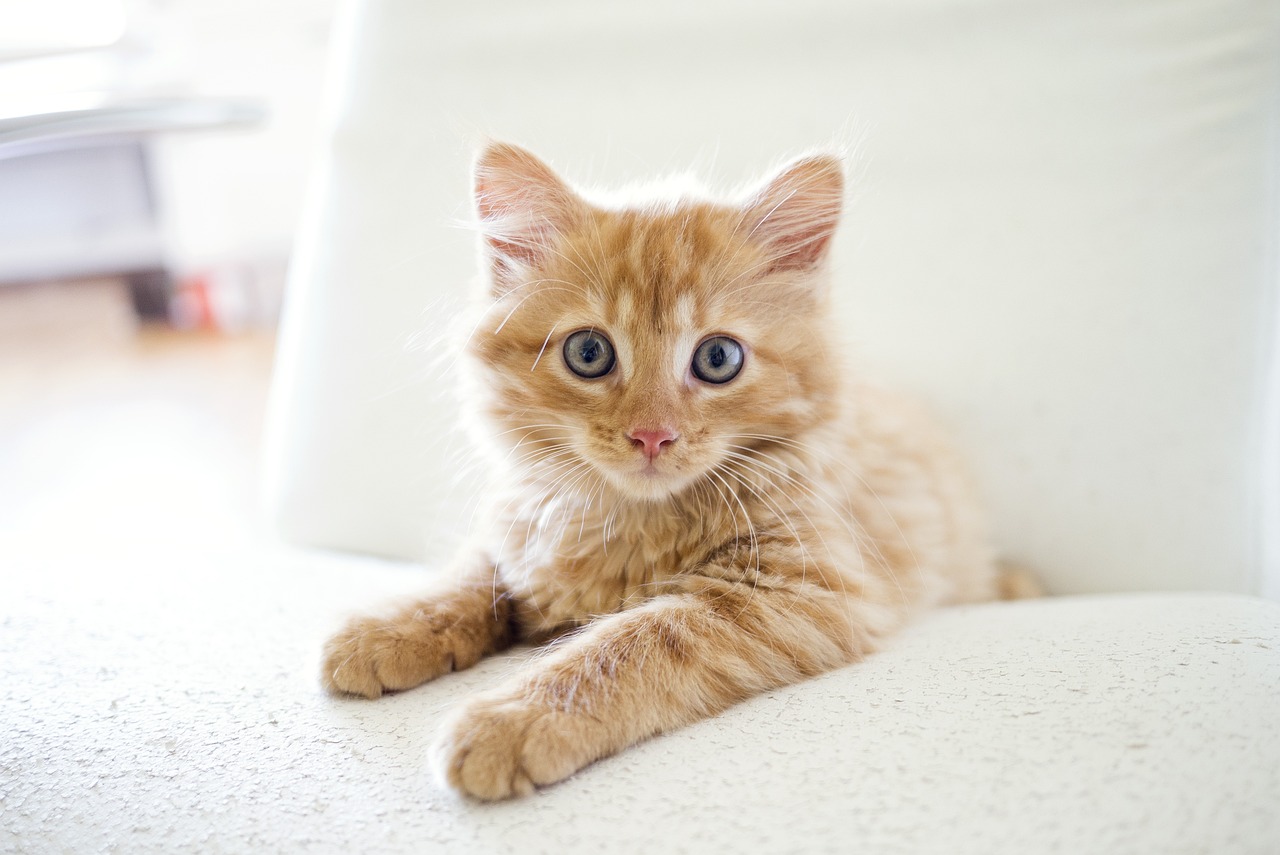| Summary: Bringing a kitten home requires careful preparation to ensure they have everything they need. Key items include food and water bowls (preferably stainless steel or ceramic), a comfortable bed, a litter box, kitten-specific food, and toys for mental and physical stimulation. Don’t forget to schedule a vet appointment for vaccinations and preventative care. |
Bringing home a kitten is one of the most exciting moments in life. They’re full of energy, curiosity, and cuteness that can melt anyone’s heart. But while it’s an exciting time, it also requires careful new kitten checklist planning. I’ve gone through this process myself and learned a lot along the way, so I’m here to guide you through everything you need to prepare for your new kitten’s arrival.
From the essential supplies to health tips and even training advice, I’ve got you covered. By the time you finish reading this, you’ll be ready to provide your kitten with the best start in life. Learn more about the unique double-layered coat of an Anatolian Shepherd and how to care for it effectively.
Blog Highlights
TogglePersonal Opinion
Before we dive into the new kitten checklist, let me share my experience. Getting a kitten was one of the best decisions I ever made, but it wasn’t always smooth sailing. There were a lot of late-night googling sessions and trips to pet stores to figure out what I really needed.
You’ll definitely want to be prepared for the first few weeks, as kittens are full of energy and have specific needs.
One thing I wish I knew earlier: the right tools, food, and a structured environment are key to making both you and your kitten comfortable. Let’s take a look at the must-have essentials. Discover the perfect collar size for an Anatolian Shepherd Dog to ensure comfort and security for your furry friend.
New Kitten Checklist FAQ: Quick Guide
| Question | Answer |
| What are the essential supplies for a kitten? | Food/water bowls, litter box, bed, toys, food. |
| How often should I feed my kitten? | 8-12 weeks: 4 meals/day, 3-6 months: 3 meals/day. |
| What type of litter box is best? | Open, covered, or high-sided boxes, based on preferences. |
| When should I take my kitten to the vet? | First visit at 8 weeks, vaccinations at 6-8 weeks, 12-16 weeks. |
| How do I kitten-proof my home? | Use baby gates, secure dangerous items, and protect furniture. |
| What toys should I get for my kitten? | Feather wands, rubber toys, and catnip balls. |
| What’s the cost of getting a kitten? | Initial: $200-$400; Ongoing: $30-$80/month. |
New Kitten Checklist: Essential Supplies for Your New Kitten
1. Food and Water Bowls
I didn’t realize how important this was until I had to replace the cheap plastic bowls I bought at first. While they might seem harmless, plastic can get scratched over time and harbor bacteria. That’s why stainless steel or ceramic bowls are a better choice. They are more hygienic and easy to clean.
Table: Size Recommendations for Food and Water Bowls
| Kitten Age | Food Bowl Size | Water Bowl Size |
| 8-12 Weeks | 1/4 to 1/2 cup | 1/2 cup |
| 3-6 Months | 1/2 to 1 cup | 1/2 to 3/4 cup |
| 6+ Months | 3/4 to 1 cup | 3/4 cup |
2. Kitten Food
Feeding your kitten the right food is crucial for their growth and health. I made the mistake of feeding my kitten adult food early on, and it slowed down his growth. Kittens need food specifically designed for their nutritional needs.
I recommend choosing a high-quality kitten food that’s rich in protein and omega-3 fatty acids for healthy brain and eye development.
How Much Should You Feed Your Kitten?
- 8-12 weeks: 4 meals a day (around 1/4 to 1/2 cup per meal)
- 3-6 months: 3 meals a day (around 1/2 to 1 cup per meal)
- 6+ months: 2 meals a day (around 3/4 to 1 cup per meal)
Be sure to follow the feeding instructions on the food packaging as it will depend on your kitten’s weight and breed. For detailed guidance on selecting the correct collar size for a Belgian Shepherd, this article provides essential tips to ensure your dog’s comfort and safety.
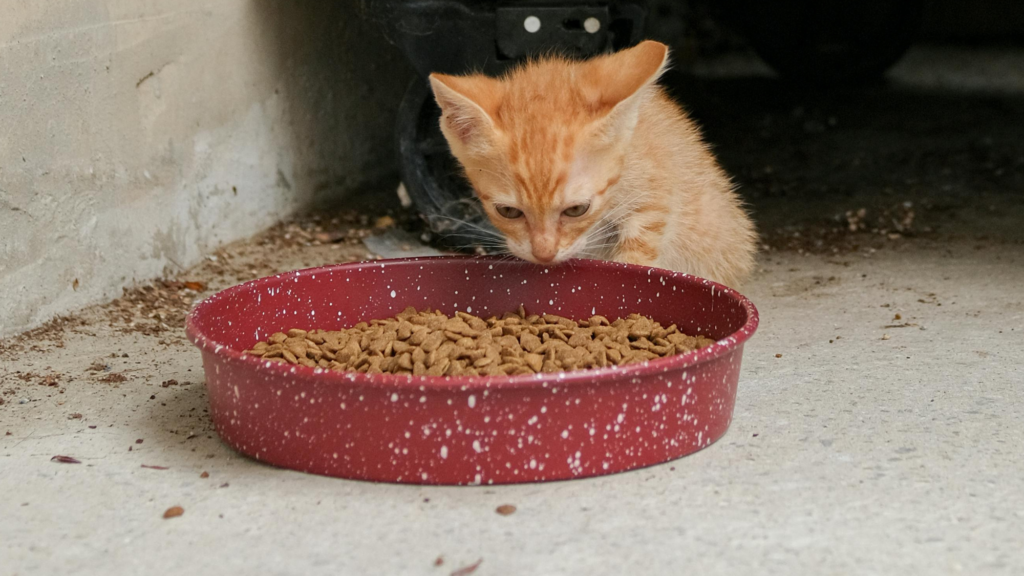
3. Litter Box and Litter
A litter box is essential, and I can’t stress enough how important it is to get the right one. At first, I used a basic plastic box, but as my kitten grew, I upgraded to a larger, covered box to help contain the mess.
Table: Litter Box Options
| Litter Box Type | Pros | Cons |
| Open Box | Easy to access, affordable | Can get messy and smellier |
| Covered Box | Helps with odor control | Some kittens may not like it |
| High-Sided Box | Good for kittens who tend to scatter litter | Requires more frequent cleaning |
| Self-Cleaning Box | Convenient, no manual scooping | Expensive and requires power |
4. Kitten Bed
When I first brought my kitten home, I didn’t realize how much they need a designated sleep area. I just used a blanket, but he quickly outgrew that. A cozy kitten bed gives them a sense of security and comfort. Look for one that’s soft and washable, so you can easily clean up any messes.
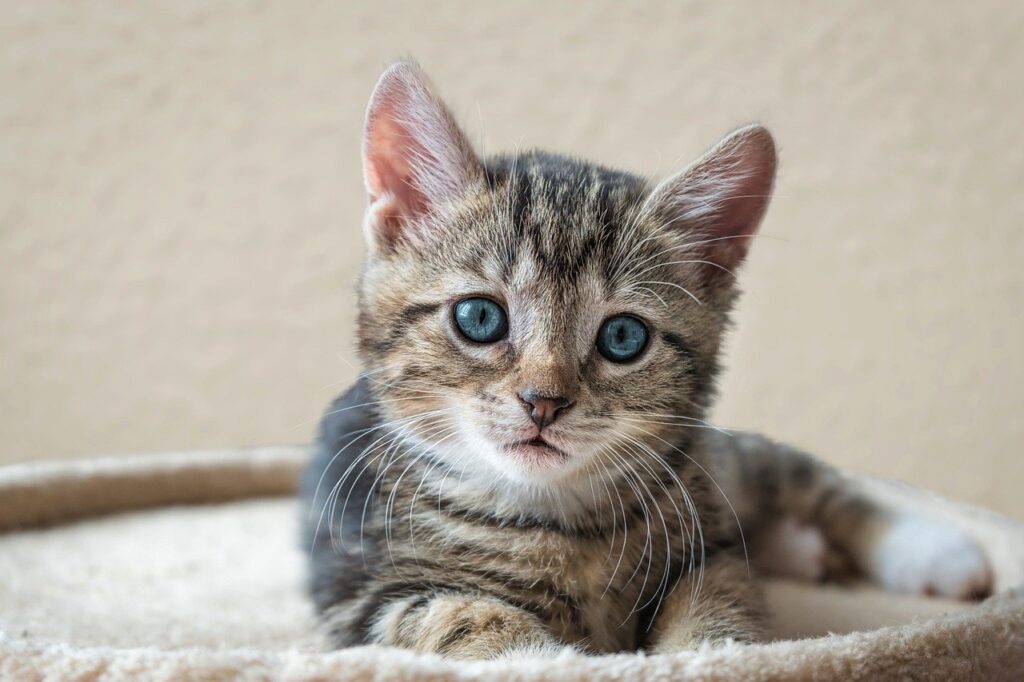
5. Toys and Enrichment
Kittens are naturally playful, and keeping them entertained is crucial to their development. I’ve found that interactive toys, like feather wands and laser pointers, are a great way to burn off some of that energy. I also like to provide some catnip toys and balls that they can bat around.
Table: Best Toys for Kittens
| Toy Type | Benefits | Examples |
| Interactive Toys | Engages their mind and body | Feather wands, laser pointers |
| Chew Toys | Helps with teething and biting | Rubber kitten toys, soft chew toys |
| Balls and Mice | Perfect for solo play | Catnip balls, plush mice |
| Puzzle Toys | Provides mental stimulation | Treat-dispensing toys |
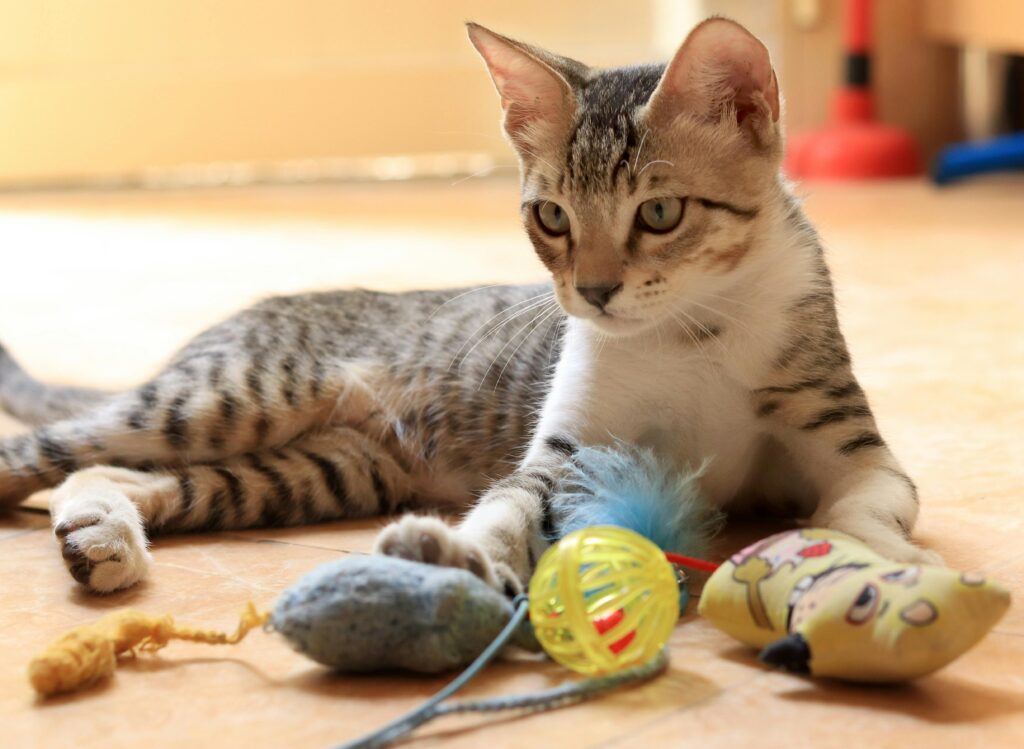
Health and Grooming Essentials for Your Kitten
When it comes to health, I learned the hard way that preventative care goes a long way. From vet visits to grooming, it’s important to get your kitten on the right track early on.
1. Vet Appointment
I took my kitten to the vet as soon as I got him home for his first health check. It’s essential to get your kitten vaccinated and treated for fleas, worms, and other common kitten problems.
Vaccination Schedule:
- 6-8 weeks: First vaccination (distemper, calicivirus)
- 12-16 weeks: Second vaccination (leukemia, rabies)
- 6 months: Final boosters
Parasite Control: Ask your vet about flea, tick, and worm treatment based on your kitten’s health. For expert tips on how to fit a collar on a Belgian Shepherd, this guide offers simple steps to ensure your dog’s collar fits securely and comfortably.
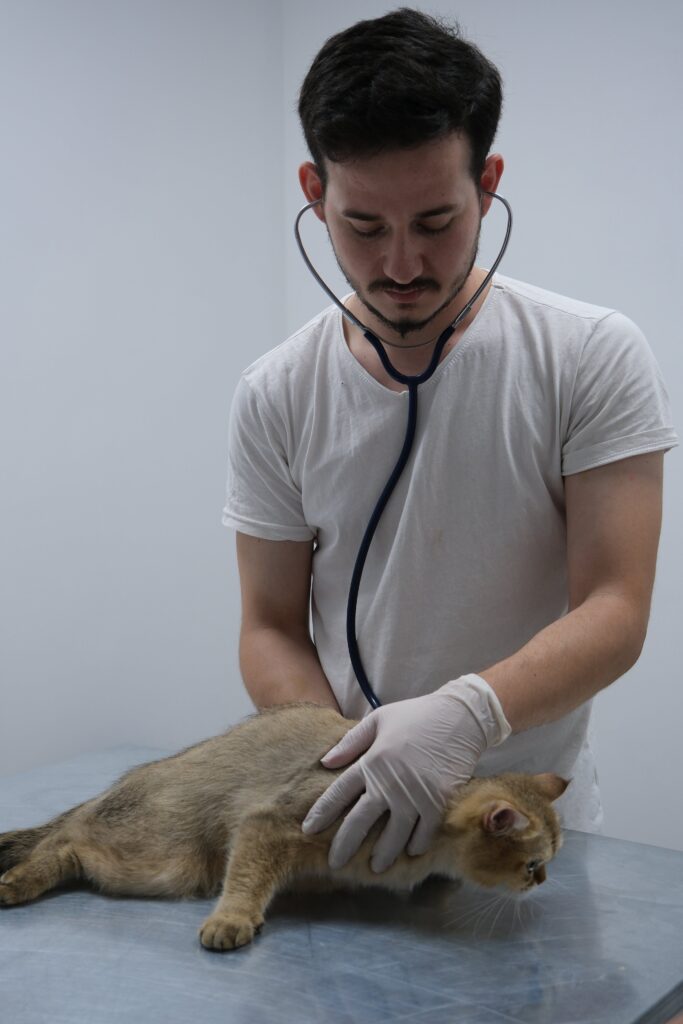
2. Grooming Supplies
Kittens love to explore and often get messy, so grooming supplies are necessary. Here’s what I recommend for basic grooming:
- Brush: A kitten-specific brush, especially for long-haired breeds
- Nail Clippers: Invest in kitten-sized clippers to keep those claws in check
- Shampoo: Use gentle kitten-safe shampoo, especially if your kitten has skin sensitivities
3. Kitten-Proofing Your Home
I didn’t realize how much my kitten would get into until I started seeing the world through his curious eyes. Kittens like to chew on cords, climb on furniture, and explore every nook and cranny. I had to kitten-proof my home by securing dangerous items and putting away sharp objects.
Kitten-Proofing Tips:
- Use baby gates to block off areas you don’t want your kitten to access.
- Store cleaning supplies and chemicals in cabinets with childproof locks.
- Protect your furniture with cat-safe covers to prevent scratching.
Training Tools and Resources
Training a kitten might sound like a daunting task, but it’s really all about patience. I started by using a few basic training tools that helped me establish good habits early on.
1. Kitten Training Pads
While litter training is natural for most kittens, training pads are a helpful tool for times when your kitten can’t make it to the litter box. These pads are absorbent and easy to clean up.
2. Clicker Training
Clicker training is a fun and effective way to teach your kitten commands. I used a small clicker to mark behaviors I wanted to reinforce, such as coming when called.
Socialization and Exercise
Kittens need a lot of stimulation to grow into well-adjusted adult cats. Early socialization and regular exercise are crucial to their emotional development.
1. Interactive Play Sessions
At least 30 minutes of playtime each day is important. I used to have short sessions to help my kitten burn off energy and stay physically healthy.
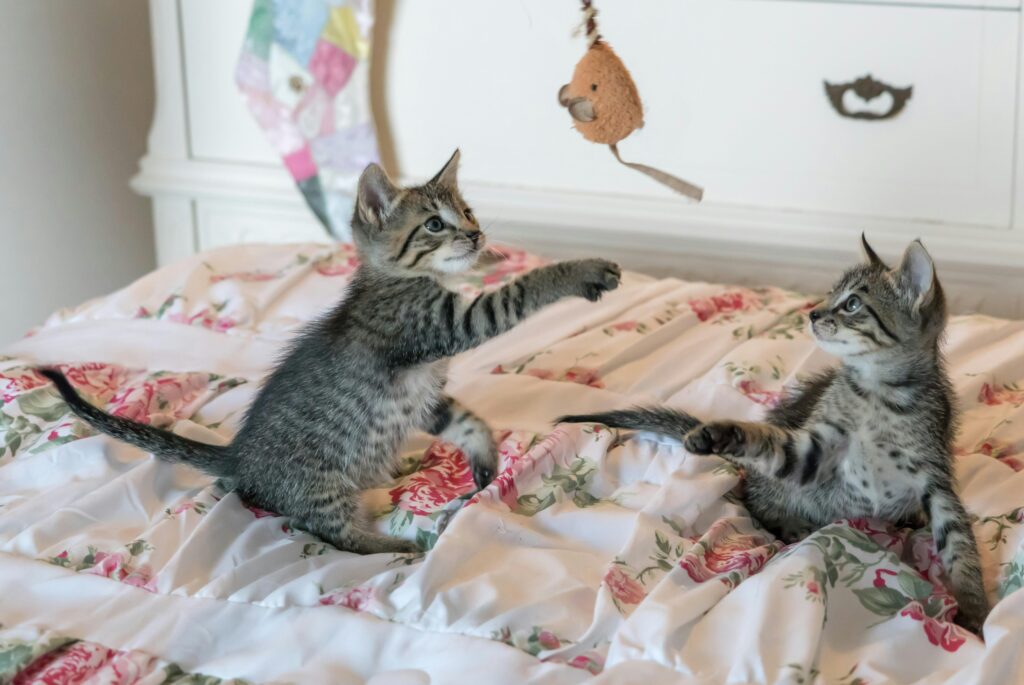
2. Socializing with Other Animals and People
Introducing your kitten to new people, pets, and environments is key to developing their social skills. I slowly introduced my kitten to friends and family, ensuring he was comfortable around new people. Discover the ideal fit by learning what size collar for Newfoundland dog to ensure your pet’s comfort and safety.
Financial Planning for a New Kitten
Being prepared financially is just as important as being prepared practically. Here’s a breakdown of initial and ongoing expenses.
1. Initial Costs
| Item | Estimated Cost (USD) |
| Food and water bowls | $10 – $30 |
| Kitten food | $30 – $50 |
| Litter box and litter | $20 – $50 |
| Bed | $20 – $40 |
| Toys | $10 – $30 |
| Vet visits (initial) | $100 – $250 |
2. Ongoing Costs
| Item | Estimated Cost (USD) |
| Monthly food | $25 – $50 |
| Litter | $10 – $30 |
| Vet care (annually) | $150 – $300 |
Wrapping Up
Getting a kitten is a big commitment, but it’s also incredibly rewarding. I hope this new kitten checklist helps you prepare for the exciting journey of kittenhood. From supplies to health care and training, there’s a lot to consider, but trust me, it’s worth it when you see your little one growing into a happy and healthy cat.
Remember, every kitten is unique, and your journey will be filled with plenty of surprises. But with the right preparations, you’ll be able to give your kitten the best start possible. Ensure your Newfoundland’s comfort and security with expert tips on how to ensure a safe collar fit for Newfoundland.

